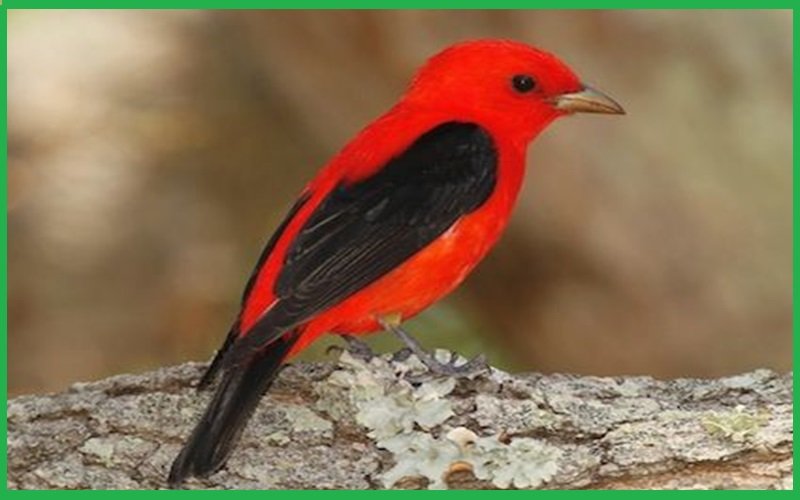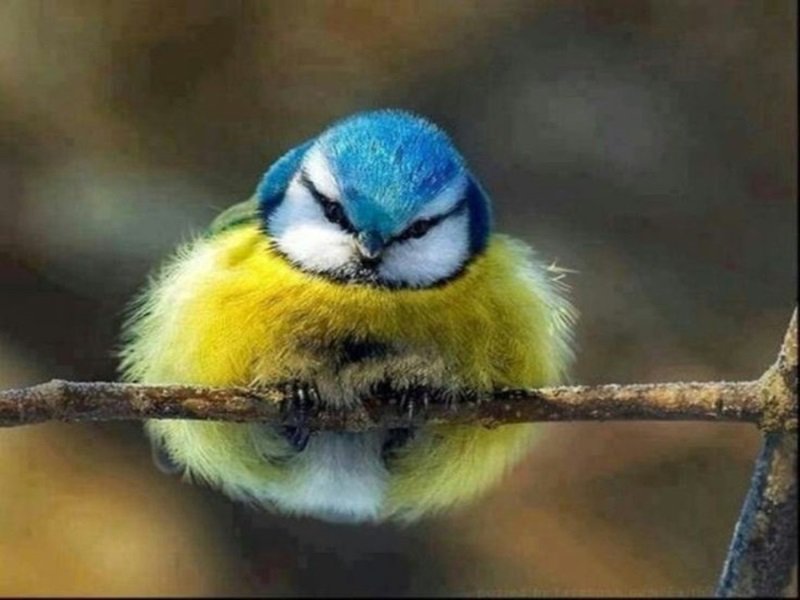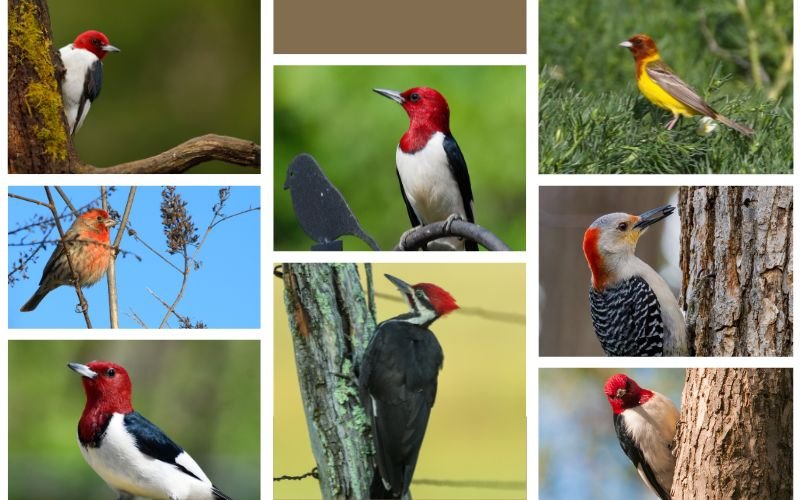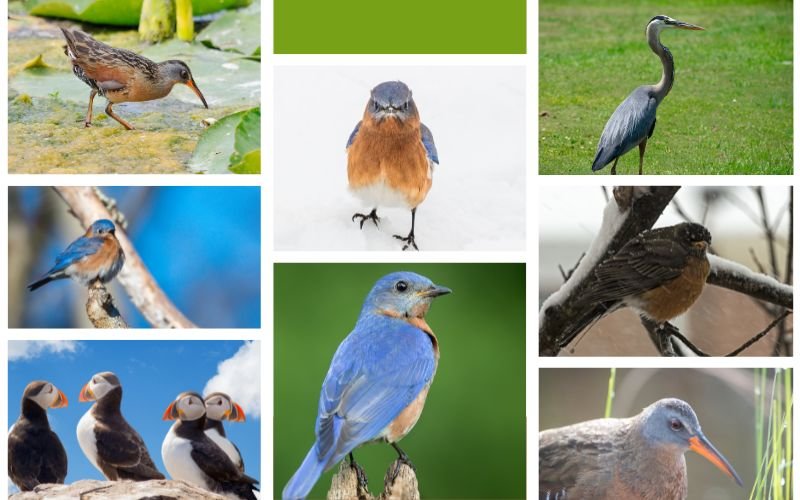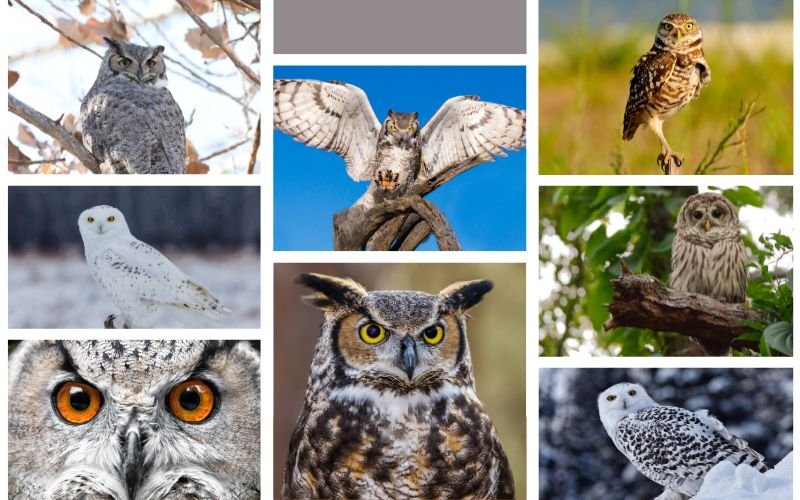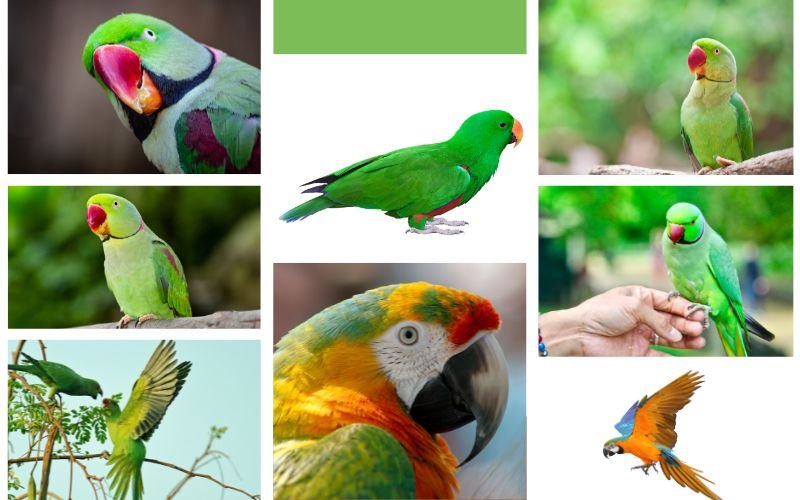Speckled breasts of a bird means birds with various patterns on the breasts which carry their hereditary genes and some ecological factors within them. They have distinctive characteristics which make them more stunning for bird observers.
This article will explore the top 15 birds with speckled breasts along with their characteristics such as scientific names, lifespan, native place, size, and other facts about them by understanding them thoroughly. So let’s dive into this species of speckled breasts bird’s world.
Top 15 Birds With Speckled Breast
Birds with speckled breasts have a unique charm and hold an alluring nature in them. This section will give you a brief idea about these speckled breast birds’ different characteristics besides their scientific names, native place, lifespans, and their size and shape.
1. Wood Thrush
- Scientific name: Hylocichla mustelina
- Lifespan: around 9 years
- Native to: North America
- Size: around 18 to 22 cm
Wood thrush bird is native to North America. They are also similar species of American robin birds. The back side of the body is a muddy brown color, and their breasts and belly are speckled with black and dark brown color.
During their season, they migrate to northern Canada and Florida from the Atlantic coasts. Later in the winter, they migrate to Central America, mostly in the lowlands like the Atlantic and Pacific coasts. In the summertime, they prefer fruits, but after migration, they like to have insects such as snails, salamanders, etc.
2. Northern Flicker
- Scientific name: Colaptes auratus
- Lifespan: almost 9 years
- Native to: North America
- Size: 28 – 36 cm
Northern flicker birds are also regarded as common flickers. They are associated with woodpecker bird species. Although they are native to North America, they are also familiar with Central America, Cuba, and the Cayman Islands. They prefer mostly open places like parks, woodlands, yards, and edges near trees for their habitats.
Their diet contains fruits, berries, insects, grapes, cherries, seeds, etc. And they eat mostly what they have found on the ground. Males and females flicker together build their nests and raise their young there.
3. Fox Sparrow
- Scientific name: Passerella iliaca
- Lifespan: 10 years
- Native to: Northern Canada, Western North America Alaska California
- Size: 15-19 cm
The Fox sparrow is a medium size bird with a brown body and speckled breasts. Their weight is around 26-44 grams and their wings are around 26 to 29 wide.
These are migratory birds that’s why they travel from the west coast of the United States. They build their nests on the ground or on low levels of trees. They eat seeds, fruits, insects, crustaceans, etc on their food habits.
4. American Robin
- Scientific name: Turdus migratorius
- Lifespan: around 2-5 years
- Native to: North America
- Size: around 23-28 cm
American Robin is a medium size migratory bird and they are familiar in North America, Canada, Mexico, and the Pacific coasts as well. Their upper body or back is black and brown and their belly and breasts part is orange-brown speckled.
They breed in North America and after breeding they travel to Central Mexico and the Pacific coast. During their breeding period, American robins protect and defend their territory and they become less social with other birds and humans. They prefer fruits, berries, cherries, insects, and caterpillars. grasshoppers, earthworms, beetles, etc.
5. Song thrush
- Scientific name: Turdus philomelos
- Lifespan: around 3 to 4 years
- Native to: United Kingdom, Russia, winter in Europe, Middle East, Northern America
- Size: around 20-24 cm
The Song Thrush is a subspecies of the thrush family with a plain brown upper part and white and dark brown speckled breasts. They breed in the United States eastwards, Scandinavia, and Russia. Later, they travel to Europe, Northern Africa, and the Middle East in the winter seasons.
they prefer open areas, gardens, and parks for their habitats. They like to catch or hunt their prey by a run and stop hunting techniques on the ground however, they are fond of fruits, berries, earthworms, snails, and insects by using their hunting techniques.
6. Speckled-breasted Wren
- Scientific name: Pheugopedius sclateri
- Lifespan: around 5 years
- Native to: Northwestern Peru, Western Colombia, and Southwestern Ecuador
- Size: 14.5 to 15.5 cm
The speckled-breasted wren bird is under the species of wren birds. They are similar in Colombia, Ecuador, and Peru. They prefer mostly wetlands, wet tropical or subtropical, moist tropical, and shrublands areas for their habitats.
They are also recognized for only eating insects. Their breeding seasons start from April to September. Their nests are made from sticks, leaves, vines, and lichen. They build their nests closer to the ground or on the ground. Parents carry food for their young inside the nests. The female gives four eggs together.
7. Speckled Hummingbird
- Scientific name: Adelomiya melanogenys
- Lifespan: around 3 to 5 years
- Native to: Argentina, Peru, Bolivia, Ecuador, Colombia, and Venezuela
- Size: Approximate 8 cm
Speckled Hummingbird birds are another subspecies of hummingbirds birds. They are about 8 cm long in length. Their body plumage is a glossy greenish-yellow and brown combination. Above the eye side, they have a long white line with a long sharped beak.
These birds travel or migrate alone rather than in groups or pairs. Females Hummingbirds raise their chicks alone. Male birds do not even assist in building nests for their young. After the egg hatches, the young leave their nests within 20 days. Their prime food is nectar from flowers, trees and shrubs. They also prefer insects for their diet.
8. Chilean hawk
- Scientific name: Accipiter chilensis
- Lifespan: not founded
- Native to: South America: Chile, Argentina, Tiernan del Fuego
- Size: 37- 38 cm
Chilean hawks are the breed of the Hawks family. Their body’s lower part is ashy-gray with a speckled pattern. Their eyes are yellow and their legs are yellowish green. They are familiar in South America’s Andes forests of Central Chile, Western Argentina, and Tierra del Fuego during their breeding seasons. In winter they are seeing Northwest Argentina.
They become vocal during their breeding period and create high-pitched sounds for their defense techniques. Both male and female pairs hunt together during their breeding seasons. Their specific food habits are still disclosed however they are seen to eat the tiny, small birds from the forests. Sometimes they also catch some insects during their midair flight.
9. Barred Forest Falcon
- Scientific name: Micrastur ruficollis
- Lifespan: not founded
- Native to: America: Central and South areas
- Size: 31 to 39 cm
Barred Forest Falcon is under the category of birds of prey. They have dark brown speckled breasts and sharp beaks. They are mostly familiar with the South part of America and the Central part of America apart from Chile and Uruguay.
They avoid human surroundings. They prefer forests, woodlands, bamboo, and outer crops of both naturally sourced and secondary sources for their habitats. Their maximum diet contains lizards, small insects, small birds, mammals, bats, snacks, and frogs.
To catch or hunt their prey they use lots of hunting techniques for example they chase their prey on foot, they flaunt their wings and cover their prey, and they attack other prey’s nests. Their breeding starts in mid-April and August.
10. Mistle Thrush
- Scientific name: Turdus viscivorus
- Lifespan: around 3 to 5 years
- Native to: Europe
- Size: around 27-28 cm
Mistle Thrush is a medium size bird of the thrush family with a grayish-brown body and speckled breasts. Most of the species are found in Europe, later Asia, and North Africa. These thrush birds prefer forests, plantations, towns, parks, hedges, farmlands, and urban areas for their habitats.
These species of thrush birds do not travel or migrate to other places and stay with their partners throughout the years. Both male and females feed their young for 15-20 days after fledgling. These species mostly eat invertebrates, fruits, berries, earthworms, insects, arthropods, snails, etc.
11. Brown thrasher
- Scientific name: Toxostoma rufum
- Lifespan: around 12 years
- Native to: United States, Canada
- Size: around 23.5 to 30.5 cm
The brown thrasher is also regarded as brown thrush or fox-colored thrush with speckled breasts. They are familiar in the United States, and Canada. Their inhabitants’ places are woodlands, rocky mountains, dense brush, agricultural areas, and suburban areas. Their diet has insects, berries, nuts, seeds, earthworms, snails, lizards, and frogs.
They are mostly observed to be alone or in pairs. They do not travel high, rather they prefer low-level flying very close to the earth’s surface. They spend their maximum time on the ground surface of the earth or near the ground level. They are aggressive in nature by protecting their nests from any intruders.
12. Ovenbird
- Scientific name: Seiurus aurocapilla
- Lifespan: around 2.7 years
- Native to: The United States, Canada
- Size: 11-16 cm
Ovenbird is a small bird with an olive-brown body and patterning speckled breasts on their body. They are familiar in the eastern part of the United States and Canada. They are fond of mixed forests, woodlands, shrubs, and habitats.
These species migrate or travel to the southeastern United States, the Caribbean from Mexico, and South America.
They travel in large groups during their migration periods. They prefer snails, arthropods, and fruits in their diet. Here not male birds but female birds protect their nest from intruders by performing distraction displays.
13. Bendire’s thrasher
- Scientific name: Toxostoma bendieī
- Lifespan: not ded founded
- Native to: Southwestern of the United States and northwestern Mexico
- Size: 23 to 28 cm
Bendires is a medium size bird with a dusky brown body and speckled breast patterns. Their eyes are bright yellow and their white-tipped tails. They are familiar with the Southwestern part of the United States and the Northwestern part of Mexico.
They are fond of brushy areas, farmlands, grasslands, valleys, drylands, and Skyland for their habitats. Their diet contains small insects and fruits. They build cup-shaped nests in a shrubby desert or in the trees. There the female bird gives three to four eggs with a pale green and blue color.
14. Savannah sparrow
- Scientific name: Passerculus sandwichensis
- Lifespan: around 6.1 years
- Native: America; North, South, and Central
- Size: 11 to 17 cm
Savanna sparrows are small birds which are associated with the sparrow birds family. Their body is brown-black with white-black speckled breasts.
They are familiar in Canada, the Northern, Central, and Pacific of the United States, Mexico, and Guatemala during their breeding season. Later they migrate from the United States to Central America, and South America during the winter season.
15. House Finch
- Scientific name: Haemorhous Mexacanus
- Lifespan: around 11 years 7 months
- Native to: Western North America
- Size: 12.5-15 cm
A House Finch bird is a small bird with brown or dusky brown color with speckled red or brownish breasts. Male birds have red beaks and patches on their face and breasts. They are familiar with North America and prefer suburban areas, semi-open places for their habitats.
Their diet contains grains, seeds, berries, sunflowers, etc. They prefer tree cavities to build their nests. Sometimes they also made their nests in buildings, hanging plants, and other cup-shaped places.
They also use other nests which are abandoned by those birds. Female birds build their nests. These species are aggressive birds and chase other birds from their territory.
Conclusion
In short birds with speckled breasts carry unique charm and temptations which attracts the attention of the world. The pattern of their breasts creates a magnetic view among other avian species.
These speckled breasts bird’s different characteristics, habitation, food habits, and adaptation quality help them to survive in nature. Apart from speckled breasts, there are a lot of birds with red breasts which make their appearances more magnetic and charming.
If you want to know more about these species of avian groups, you can explore their unique characteristics and explore their avian world.




